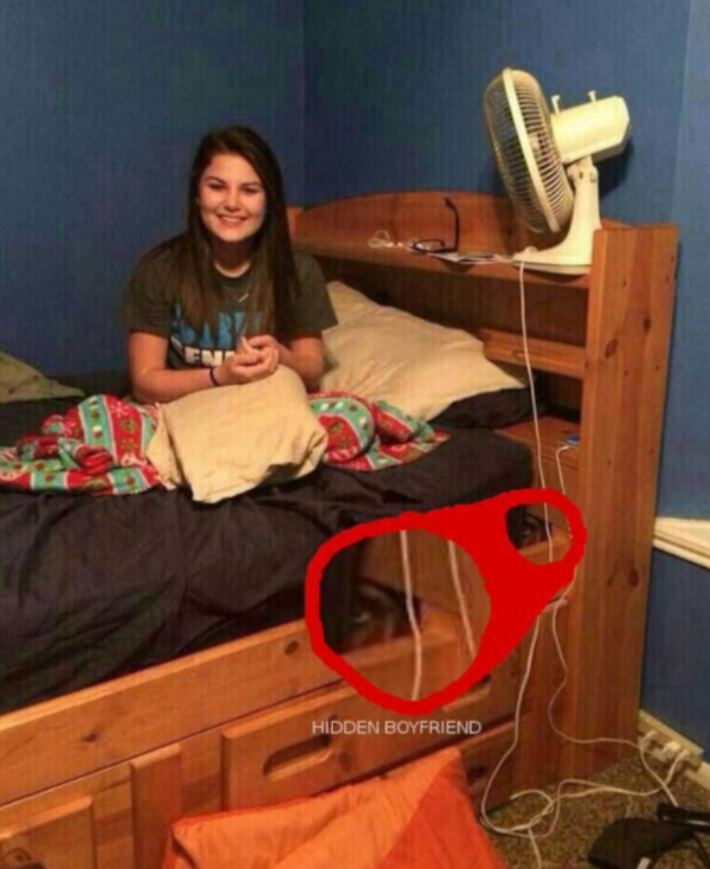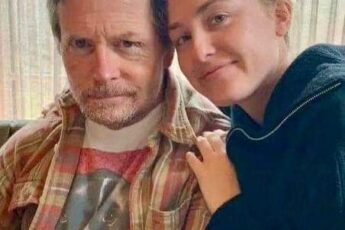We are frequently enthralled by riddles and puzzles that uncover hidden truths. Many people are perplexed by this specific picture, which shows a husband who, after carefully analyzing it, decided to file for divorce from his wife. At first look, the picture seems innocent: a smiling woman sitting on a bed with nothing fishy about her. But something subtle, something concealed, leads to a startling discovery.

The image depicts what appears to be a typical home scenario. A woman wearing a brown t-shirt sits on the bed and smiles while a fan runs in the background. To surprise her, her husband had come home early from a business trip. She seemed to be very happy to see him based on the smile on her face.
But on a subsequent trip, the spouse examines the picture and discovers something disturbing that completely alters the situation. What might this be?
Many people’s first thought is that the woman might be concealing something or someone. Maybe there’s a secret lover hiding in the bed’s folds. The thought of adultery immediately springs to mind, and it’s simple to speculate that this revelation might have been the catalyst for their marriage’s breakdown. The idea of anything concealed beneath the bed linens—possibly a face or an additional pair of eyes—is one hint that is frequently mentioned.
However, why would one picture disclose such a terrible reality?
This picture serves as a reminder that often the most important secrets are hidden in the smallest details. The secret in this puzzle might be concealed in the picture’s background or in a little-known area. Maybe a shadow, a reflection, or perhaps anything on the bed revealed that the wife wasn’t by herself. It’s a visual puzzle meant to provoke thought by making us examine the image’s details in more detail.
Beyond its literal meaning, this puzzle has a metaphorical meaning. Images can sometimes convey more than just what they depict. Could the features in the photo represent relationship flaws that the husband had previously overlooked? He might have discovered a figurative presence instead of a physical one—a sense of betrayal or emotional remoteness.
This puzzle appeals to our love of investigative work and is more than simply a straightforward picture. We have an innate ability to solve challenges, particularly those that cause us to wonder about what might be concealed from view. These kinds of puzzles help us use our creativity by forcing us to construct possible outcomes from sparse data.
Even though the precise solution to the puzzle is still unknown, the process of inference is what keeps us interested. We want to know what the husband seen, what caused him to make the startling decision to dissolve his marriage, and if we would have witnessed it as well.

This puzzle may appear to be merely a lighthearted brainteaser, but it actually captures a more significant reality about trust and relationships. Sometimes the smallest details can have the most impact, as evidenced by the husband’s discovery based on something as basic as a snapshot. On closer examination, a seemingly innocent encounter caught on camera can disclose hidden realities.
In life, as in this puzzle, the most important things are frequently the ones we ignore.
These kinds of puzzles pique our interest and challenge us to think more deeply and critically about everything we see. The mystery of this picture never ceases to captivate, whether it is the implication of a secret lover or a metaphor for distrust. What do you believe the spouse saw, then? Could you decipher the picture’s hidden meaning?
The process of solving this puzzle—which tests our assumptions and pushes us to see beyond the obvious—may ultimately be more significant than the actual solution.






